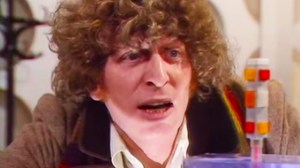One of the most important events in the entire history of Doctor Who occurred 59 years ago on this day, and it changed the shape of the BBC series forever. Doctor Who will be celebrating its 62nd anniversary very soon, having premiered on the BBC way back on November 23, 1963. Three years after its premiere, however, something else happened in the science-fiction series that would have an impact on the Doctor’s adventures across time and space many times in subsequent years, so it’s perhaps an equally as important anniversary for the iconic series.
Videos by ComicBook.com
59 years ago exactly, on October 29, 1966, the Doctor regenerated for the first time on-screen. William Hartnell’s First Doctor fell ill during battle against the Cybermen in the partly-missing second serial of Doctor Who’s fourth season, “The Tenth Planet.” The final part of this serial released on October 29, 1966, and ended with the First Doctor collapsing and regenerating into Patrick Troughton’s Second Doctor before the eyes of his companion, Polly and Ben Jackson. Troughton made his official debut in November 1966’s “Power of the Daleks,” and Doctor Who would never be the same again.
How Doctor Who’s Regenerations Have Become More Important in Recent Years

The idea of Doctor Who’s Time Lords being able to regenerate – completely changing every cell in their body when they become ill, injured, or old – was first floated by producer John Wiles and script editor Donald Tosh. Doctor Who’s crew needed to devise a way to continue the show despite William Hartnell’s departure, given his declining health, while it was Wiles’ successor, Ines Lloyd, who has been claimed to be the creator of the actual biological process. In total, the Doctor has regenerated almost 20 times, and the process has undergone some major changes in that time.
Over the years, it was established that Time Lords get 13 different incarnations, of which the Doctor had used up by his eleventh numbered variation, played by Matt Smith. He was supposedly gifted a new regeneration cycle by the Time Lords, however, allowing him to live on, but the titular character’s more recent adventures have wildly changed how we see this event. Jodie Whittaker’s run as the Thirteenth Doctor revealed the character is actually the fabled “Timeless Child,” a being from another universe with an unlimited number of regenerations – and the source of the Time Lords’ own ability to regenerate.
This reveal came with the realization that the Doctor lived many lives before William Hartnell’s First Doctor stole the TARDIS and left Gallifrey. One of these lives was Jo Martin’s Fugitive Doctor, but there are countless others dating back to before the Time Lords even began that we haven’t met. The rules of regeneration have changed many times over the years, but the fact remains the same – October 29, 1966, was the first time we saw this process play out on-screen, making it one of the most important dates in the Doctor Who calendar.
What do you think? Leave a comment below and join the conversation now in the ComicBook Forum!









